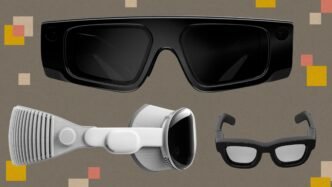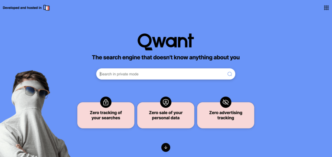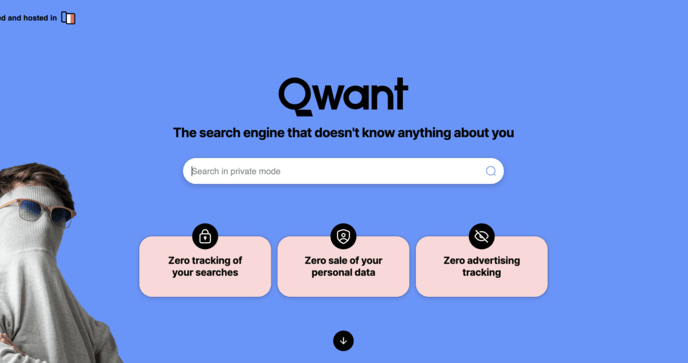Smart glasses have come a long way since the days of Google Glass, a product that failed to capture mainstream attention. However, a decade later, the tides are turning. With major tech companies like Meta, Google, and Applemaking significant strides in the development of augmented reality (AR) glasses, smart glasses are poised to be the next big consumer tech category. The key to their success lies in more than just sleek designs; it’s about integrating AI agents, developer ecosystems, and third-party apps to enhance their functionality and utility.
In this article, we’ll take a closer look at the exciting developments in smart glasses, what we can expect by 2025, and how the industry is evolving to meet consumer demands.
The Rise of Smart Glasses: A Decade Later
It’s hard to believe that Google Glass was first introduced nearly a decade ago. The device, which aimed to revolutionize wearable technology, ultimately fizzled out due to a variety of reasons, including privacy concerns and limited functionality. For years, it seemed as though the idea of face-mounted computers would remain confined to niche markets like medical and technical industries.
Fast forward to 2025, and the narrative around smart glasses is changing. Meta, Google, Snap, and others are bringing sleek, functional, and stylish smart glasses to market. No longer bulky and awkward, these new glasses are designed to look just like any other high-end pair of sunglasses or eyewear. For instance, Meta’s smart glasses, developed in partnership with Ray-Ban, now resemble the Wayfarer frames made iconic by Tom Cruise in Risky Business. Meanwhile, Google and Snap are also making waves with their respective designs and prototypes.
But, design is only half the story. What’s making smart glasses more appealing to consumers is the added value they offer beyond just looking cool.
AI Agents: The Key to Making Smart Glasses Truly Useful
The biggest leap forward for smart glasses lies in the integration of AI agents. These intelligent systems leverage large language models (LLMs) to not only understand the wearer’s environment but also take action based on that information. Over the past year, AI multimodal LLMs have made great strides in their ability to handle text, audio, images, and video—providing new applications for smart glasses.
Smart glasses, once limited to simple tasks like taking photos or making calls, are now being enhanced with AI agents that can perform more complex actions. Imagine a pair of glasses that can remind you to buy orange juice as you walk past a store or help you identify a coworker as they approach you on the street.
Meta has made significant progress in this area. Its Ray-Ban Meta smart glasses already feature an AI assistant that can interact with the wearer based on what the camera sees and what the microphone hears. Going forward, these glasses will be equipped with more contextual awareness, allowing for even more sophisticated interactions. This includes capabilities like live AI conversations that can help manage daily tasks, providing real-time information tailored to the wearer’s surroundings.
Additionally, Google has been exploring the use of AI agents in its own smart glasses. Their unnamed Android XR glasses were first demoed in 2024 and feature Astra, Google’s own AI assistant. The goal is to create a seamless experience where smart glasses can work hand-in-hand with AI to make the wearer’s life easier, more informed, and more connected.
Meta vs. Google: The Battle for Smart Glasses Supremacy
As the smart glasses market heats up, Meta and Google are emerging as the primary competitors. Both companies are betting that AI-powered smart glasses will revolutionize the way we interact with technology, positioning themselves to dominate the space.
Meta, with its strong Ray-Ban partnership, has already seen success. In fact, Meta sold over 1 million units of its Ray-Ban smart glasses last year. With new styles set to roll out in 2025, Meta plans to improve its glasses’ display capabilities, allowing wearers to see digital data and notifications. The upcoming third-generation Ray-Ban glasses are expected to include a small display, putting them on par with Google’s Android XR glasses, which feature an in-lens display.
Google, meanwhile, has been quietly working on its own smart glasses with Android XR software, which will run not only on Google-made hardware but also on glasses from third-party manufacturers. The company has placed a strong emphasis on AI, with Gemini, Google’s AI chatbot, integrated into its XR prototype.
Both companies are eyeing the same goal: mass adoption of AI-powered smart glasses. However, as Louis Rosenberg, an AR researcher, points out, it’s not just about augmenting the world around you; it’s about augmenting your brain.
The Role of Smaller Players and Third-Party Developers
While Meta and Google are at the forefront, other companies are also making significant strides in smart glasses development. Companies like Snap and Vuzix are exploring new use cases for augmented reality, with Vuzix launching its AugmentOS operating system for smart glasses.
Smaller companies are playing an increasingly important role by creating specialized apps and experiences that make smart glasses more useful. These apps, powered by third-party developers, allow for features such as navigation, real-time translation, and other practical applications. As Niantic‘s Michael Miller points out, the barrier to entry for hardware and software development has lowered, enabling smaller players to enter the market and create new opportunities.
Despite this, companies like Meta still have a clear advantage due to the Ray-Ban brand and its established consumer base. As Miller notes, selling smart glasses is much easier when you’re partnered with a well-known eyewear brand, especially when you’re still an unknown name in the market.
The Future of Smart Glasses: What to Expect in 2025 and Beyond
Looking ahead to 2025 and beyond, the smart glasses market is expected to evolve rapidly, with new features and capabilities emerging as technology improves. Here are a few things to keep an eye on:
- AI-Powered Agents: As mentioned earlier, the role of AI agents will continue to grow, making smart glasses more useful and interactive.
- Enhanced Displays: Both Meta and Google are working on integrating displays into their glasses, allowing wearers to access digital information in real-time.
- Developer Ecosystems: The more apps and experiences that can be built for smart glasses, the more attractive they will be to consumers. Expect to see a rise in the developer community creating smart glasses-specific apps.
- Fashion-forward Designs: The trend of making smart glasses look like regular eyewear will continue, with new designs from Ray-Ban, Oakley, and more. This will make AR glasses more socially acceptable and desirable.
A New Era for Smart Glasses
After years of anticipation and experimentation, smart glasses are finally entering a new era. Thanks to the combination of sleek designs, AI integration, and a growing ecosystem of third-party developers, the future of smart glasses looks bright. By 2025, these devices could become essential tools for everything from work to entertainment.
As tech giants like Meta, Google, and others compete for dominance in this space, it’s clear that augmented reality and AI-powered wearables are set to become mainstream. So, whether you’re an early adopter or just curious about the future of smart tech, the next few years are bound to be exciting.













